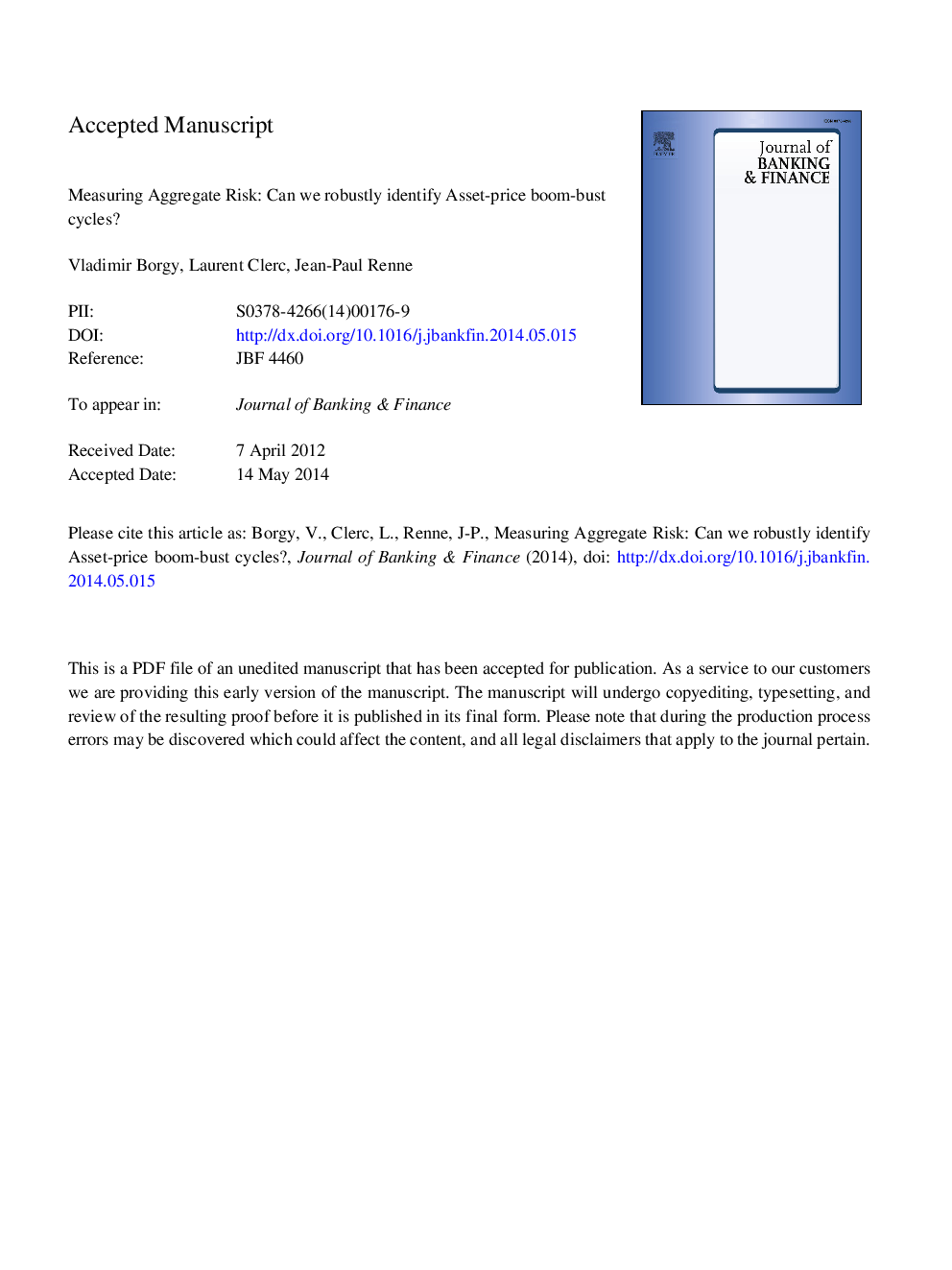| Article ID | Journal | Published Year | Pages | File Type |
|---|---|---|---|---|
| 5088818 | Journal of Banking & Finance | 2014 | 53 Pages |
Abstract
We investigate the extent to which it is possible to detect asset-price booms and banking crises according to alternative identification strategies and we assess their robustness. We find some evidence that house price-booms are more likely to turn into costly recession or to trigger a banking crisis than stock-price booms. Resorting both to a non-parametric approach and a discrete-choice (logit) model, we analyze the ability of a wide set of indicators to robustly explain costly asset-price booms. According to our results, real long-term interest rates and real stock prices tend to increase the probability of a costly housing-price boom, whereas real GDP tends to increase the probability of a costly stock-price boom. Interestingly, the credit-to-GDP gap indicator, sometimes put forward in the literature as a key reference for setting countercyclical capital buffers, does not seem to be a robust leading indicator of costly booms or banking crises.
Related Topics
Social Sciences and Humanities
Economics, Econometrics and Finance
Economics and Econometrics
Authors
Vladimir Borgy, Laurent Clerc, Jean-Paul Renne,
